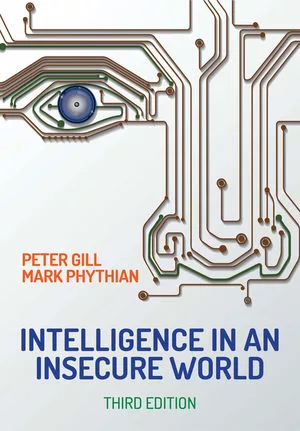How security can use deep intelligence to fight cybercrime

Due to the world’s increasing dependency on digitalization and IoT, cyberthreats have grown at an exponential rate over the last decade. In 2010, there were less than 50 million unique malware executables known to the security community; in 2019 the figure reached 900 million. These attack methods have also become increasingly distributed and sophisticated, making it very difficult for businesses stay secure.
The coronavirus pandemic has only accelerated these problematic trends. Many unprepared organizations were forced to become reliant on digital channels. In addition to managing this pivot, enterprise security and IT teams have been tasked with providing remote access for employees as part of the work-from-home shift earlier in 2020. IT professionals found themselves launching new digital platforms while wrestling with the network changes required to support dated, difficult-to-scale VPN infrastructure.
Given the tight timelines and challenging circumstances, it’s not surprising that many organizations haven’t had the opportunity to properly secure these new online channels or the millions of new home network end points. Unfortunately, cybercriminals have long recognized the opportunity and are taking advantage. A recent report from Neustar showed a 151% increase in the number of DDoS attacks between January and June 2020, compared to the same period in 2019. Security researchers expect this malicious activity to spike during the online retail peak this holiday season.
The need for deep threat intelligence
Conventional methods rely on a few experienced security analysts to handle digital security issues statically. This is simply unsustainable today. Modern cyberattacks are too numerous and complex to repel with a traditional approach. Driven by need, the cybersecurity industry has responded by undergoing a massive technological and operational shift in its practices, with data analysis driving the change.
Cybersecurity professionals have long had the ability to design security mechanisms that automatically respond to threats and mitigate them quickly. The limiting factor, however, is the ability to identify malicious activity in all the noise of daily web traffic. IT teams that diligently track the cybersecurity data generated from network and system sources are typically overwhelmed by the massive amount of information. It has traditionally been difficult to break apart the data to discover insights or implement proper security responses without a lot of effort and time spent by security professionals.
The recent breakthroughs in analytics, machine learning and AI have changed that. With the right tools, security teams have data-driven threat patterns processed and identified, providing more effective, automated security solutions with minimal human intervention. It allows IT teams to focus on strategic responses, make more informed decisions and deliver comprehensive security solutions. There is no way to ensure employees won’t fall for the latest phishing attack, but organizations can decrease the likelihood of attacks with decisioning data that accurately identifies potential threats and prevents access by unauthorized users.
There are several things to keep in mind as cybersecurity team begins creating and building out a threat intelligence capability. Here’s how to make threat data relevant, actionable, and effective for your organization.
Go beyond data to deep intelligence
Many IT teams confuse intelligence with threat data. They aren’t equivalent. Data is just that — a figure or a fact. It doesn’t provide context or risk probability. Effective threat intelligence is evidence-based knowledge that helps cybersecurity team make better decisions and improves responses. Deep intelligence takes it a step further. It uses machine learning and AI to identify attack patterns in huge amounts of unstructured data. Analysis that could take humans decades to understand and process can now be done near instantly with today’s tools, giving IT teams actionable guidance on how to respond to active operational and tactical threats.
Overworked, understaffed teams don’t have the bandwidth to process and act on raw data. Equip teams with deep intelligence so they’re able to keep pace with attackers.
Broaden the intelligence net
Raw data is still necessary to inform these deep insights, however. That means robust internal data capture practices should be in place. Comprehensive records of network event logs and past incident responses, along with information that details network, database, application, and user activity, are all critical to giving machine learning tools the context they need to identify attack patterns.
External threat intelligence is just as critical to organizational security. Third-party threat intelligence can keep IT teams and defenses up to date on the latest security challenges. Combined with behavioral analysis and pattern-based research, third-party threat feeds offer a global view that helps identify and stop bad traffic, both inbound and outbound.
Third-party threat intelligence can also provide insight into the users accessing your company’s digital assets. For example, it’s possible to use IP decisioning data to identify potential threats, as well as identify and prevent access by unauthorized users and prevent potentially fraudulent transactions. There are applications where IP geolocation data can even create a better customer experience by enabling geographically targeted, localized content and reducing friction throughout the customer journey.
Deep intelligence should drive response
Great intelligence is wasted if it’s not acted upon. Too often threat data only succeeds in overwhelming short-staffed IT teams. Make sure the systems and processes are in place to translate information into actions that protect your organization. For many organizations, automation is the solution. Consider direct threat intelligence integrations into security technology. Modern SIEMs, TIPs, Next Gen Firewalls, IPS/IDS, WAFs, and DNS Firewalls can directly integrate third-party threat data to ensure security functions are on guard against the latest cyberattacks.
The case for adopting a deep-intelligence approach to cybersecurity is clear. It’s necessary for keeping pace in the accelerating cybersecurity arms race. Cybersecurity teams can leverage these deep insights to effectively combat today’s kinetic cyberthreat activity and better protect their organizations and customers.
Looking for a reprint of this article?
From high-res PDFs to custom plaques, order your copy today!








